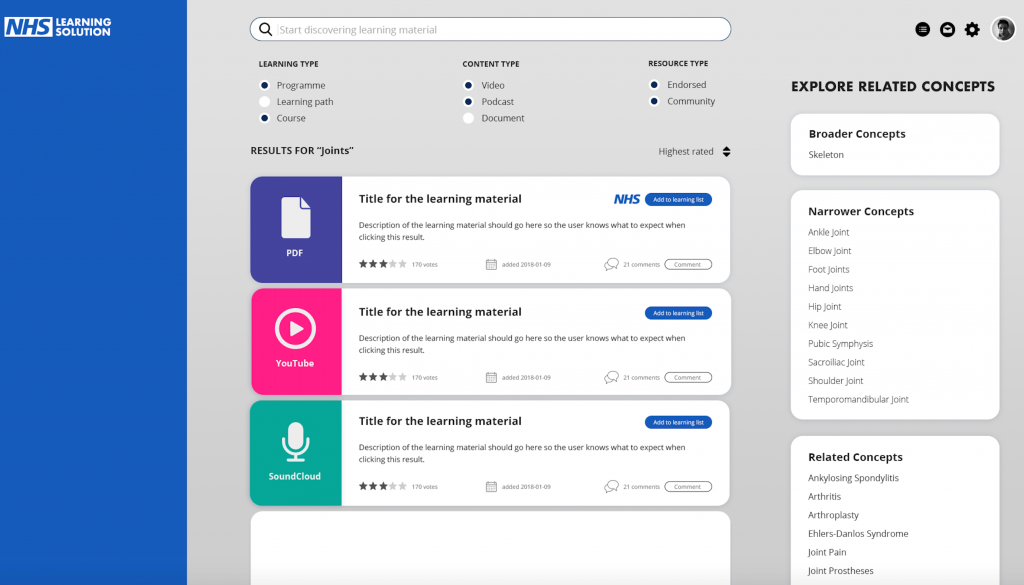Taxonomies are the words which describe the relationship between objects in the world around us. In many respects, you could consider them our superpower! Without these taxonomies, the search and interoperability between systems we take for granted on our phones, tablets and laptops, simply wouldn’t work. This hidden layer of language is known as the semantic web, a way of using words in a taxonomy to describe objects and the relationship between those objects.
For example, consider the word “apple” – the description of the word helps our computers to understand the context and determine if the word is describing the fruit or the technology company. Synonyms may also be used to provide additional clarity on the meaning of words, such as words in common use rather than clinical terms, so “heart-attack” might be a synonym of “Myocardial Infarction”.
In 2016, the HEE Technology Enhanced Learning (TEL) programme conducted a research exercise with learners that identified the need to improve the search of online learning objects. The lack of a single taxonomy was identified as one of the primary tools that could be used to improve search due to the lack of consistent words and structure in the learning object metadata (hidden words describing the content).
Following this initial research, a discovery workshop was held, in line with Government Digital Services (GDS) principles, with specialist taxonomy companies WAND and FindWise. The ambition was to agree a standard, consistent and cohesive taxonomy for categorising any resources to support search for learning materials. The workshop was used to interview system owners and learners to understand their needs from search and this was used to inform the taxonomy work which was undertaken during the Alpha phase.
A search portal was built in 2017 as a proof-of-concept using learning objects from e-Learning for Healthcare (e-LfH) and the NHS e-Learning Repository (e-Repository) to demonstrate how search could be improved by integrating a taxonomy.
The proof-of-concept offered the functionality to provide structure and meaning from poorly structured or unstructured metadata in the learning objects. A search for “diabetes” on the web page brought back results for not just the objects that were named diabetes but also concepts that were related to diabetes such as insulin management.
The search interface was tested with users in a workshop where feedback was gathered and users asked to compare their existing search experience with the new search. Feedback was overwhelmingly positive.
A formal procurement was undertaken in early 2018 to appoint a supplier for the taxonomy management tool to support the search development. There are no suppliers who can provide a single solution, so two suppliers were selected: Mekon and Findwise.
A beta prototype search interface has been developed with the suppliers to show how it will work in the new HEE Learning Hub, demonstrating how new learning objects will be indexed and providing insights into the types of search which are being conducted. The search interface for the prototype is designed for function over style but demonstrates the search filters at the top and the ability to refine the search results by using the taxonomy to filter by broader and narrower concept words and related concept words. This will enable our users to drill-down further and expand their knowledge in other areas.

Taxonomy management is an important component of the Learning Hub to help learners find learning objects through a search interface and for related words and concepts to be displayed to learners alongside their search results. The next stage of the development is to integrate the search with the design of the Learning Hub and test it with our learners and users to make sure it enhances their learning experience.
For more information about the Learning Hub visit www.hee.nhs.uk/tel and follow us on Twitter: @HEE_TEL.
